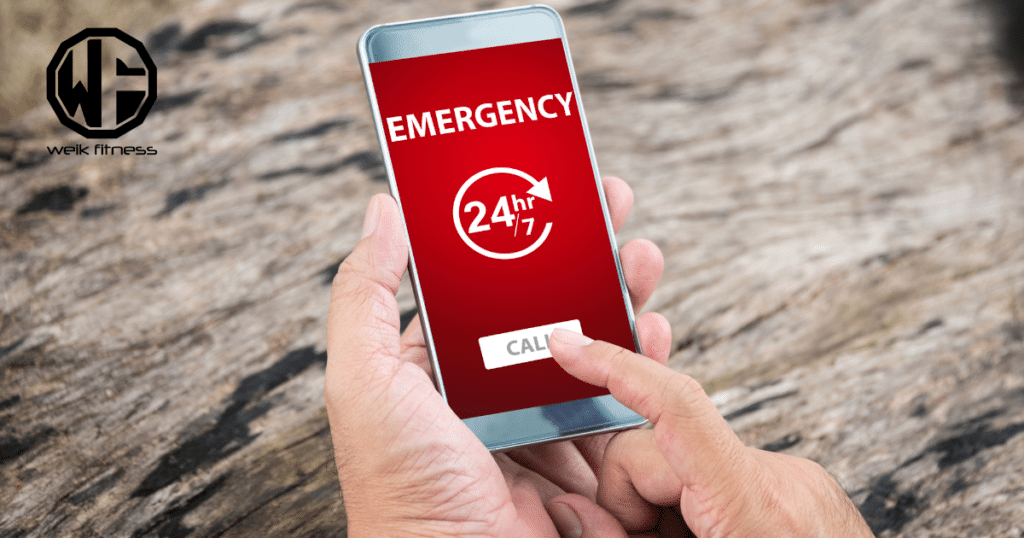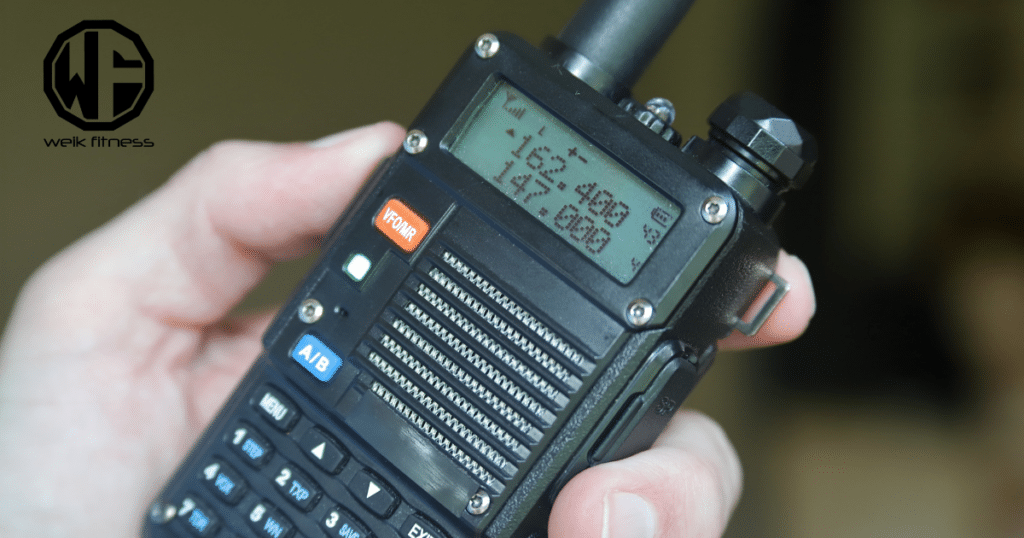Creating a PACE Plan: Emergency Communications & Contingency
Having a PACE plan is important. Failure to implement a backup method of communication in an emergency could have an extremely negative outcome.
Do you have an emergency plan in place for your family for your emergency preparedness? If not, now is the time to use PACE and build your own.
Your ability to build a communication plan is very individual to you. Your plan may differ from someone else’s contingency plans — and that’s perfectly fine. But you need to come up with a form of communication that will work for everyone in your family should an emergency arise.
This article will unpack how you can go about establishing your PACE Plan for those immediate circumstances where your primary plan may not be functional.
Table of contents
Key Takeaways
- A PACE plan or PACE communication plan has four types of communication methods (PACE acronym): primary, alternate, contingency, and emergency. These help you stay in touch during crises.
- Testing the PACE plan often makes sure it works right. Changing the plan for new challenges keeps communications strong.
- Training everyone on the PACE plan is key. Knowing how to use different tools can save lives when emergencies happen.

Key Components of a PACE Plan
The key components of a PACE plan include primary, alternate, contingency, and emergency communication methods. These methods are crucial for ensuring reliable communications in emergency situations.
Implementing these components strategically can help mitigate potential risks and ensure uninterrupted connectivity during crises.
1. Primary Communication Methods
We use landline phones and cellular networks as our main ways to talk or send messages during emergencies. These methods work best for us most of the time. Landlines rarely go down, even when a big storm hits. But if you rely on internet connections, they can be lost quite easily.
Cell phones let us reach out fast, especially when we need help right away.
RELATED: SHTF Planning — Preparedness For Emergencies & SHTF Survival
We always make sure these primary ways are ready to go. We check our equipment often — making sure batteries in cell phones are full and that our landline service is working without issues.
In an emergency, being able to call for help quickly can save lives. This is why we rely on these familiar tools first before anything else in our PACE plan.
2. Alternate Communication Methods
We know that things can go wrong. Phones and internet might not work. This is why we have alternate ways to talk during emergencies through our PACE plan. We use two-way radios (like a Baofeng UV-5R or Yaesu VX-6R) as backups.
These tools are easy to grab and simple to use.

Our team checks these radios and phones often, making sure they work when needed. This keeps us ready for anything — from hurricanes to power outages. Having these options ensures our messages always get through, no matter what happens.
3. Contingency Communication Methods
We choose backup technologies like generators and dedicated radio networks for contingency methods. These tools work well when usual ways fail. Keeping them ready is key to our PACE plan. We ensure regular checks, so they are always good to use.
Such methods shine during long outages. They keep us connected even if normal channels break down. For us, staying in touch without breaks matters most in emergencies.
4. Emergency Communication Methods
Emergency communication methods are essential for our safety during crises. We use satellite phones and Iridium phones as last-resort options when other means of communication fail.
Proper training on these tools is vital for preparedness.
During severe crises like earthquakes or hurricane season, emergency communications technologies become critical because other communication methods may be compromised. It’s important to have well-documented and accessible strategies for emergency communications in place.
This ensures that everyone involved knows what to do via the PACE plan and how to communicate effectively during emergencies.
Strategies for Implementing a PACE Plan in Emergency Situations

We ensure our PACE plan is effective and practical for emergency situations by following these strategies:
- Train all members of the community on the PACE plan to ensure everyone knows how to communicate in an emergency.
- Regularly review and update the PACE plan to adapt to changes in technology and communication tools.
- Establish clear primary communication methods, such as landline phones and cellular networks, as the first line of communication during emergencies.
- Identify alternate communication options, including two-way radios to serve as backups if primary methods fail.
- Develop contingency solutions using backup technologies like generators and dedicated radio networks for uninterrupted communication during emergencies.
- Incorporate emergency communications technologies, such as satellite phones, Iridium phones, and emergency broadcast systems, for reliable communication when traditional methods are unavailable.
As an example, I took a Tremis Dynamics Radio Ops — Day 0 class that was taught by Garry Marr and Mike Fiore. In the class where we used HAM radios, we went over our emergency management and communication plan as part of our own PACE plan.
We had to designate someone to be our comms leader, and should something go wrong with our comms, we needed a way to get each of our groups back together for the exercise. This is no different than communications efforts in emergencies with your family (or team during field operations).
Together, we created our own PACE plan in case our comms went down (for whatever reason). Each part of our PACE protocol needed to be understood by everyone to ensure we knew how we were to either get communications back up and running or where we would meet if comms check windows were not met.
Without such a PACE plan in place, we could have had teams traveling all over the area and had no idea where they were or if they needed assistance. And there were cases where we lost comms and needed to fall back to our alternate plan.
The key is to not be thrown a curveball in an emergency and have no way to communicate.
Testing and Updating the PACE Plan

Testing and updating the PACE plan is crucial for its effectiveness in emergencies. Regular testing ensures that the plan works well, while updates keep it current with new technologies and challenges.
This helps to maintain a reliable communication system during critical situations.
1. Regular Testing for Efficiency
Regular testing of our communication methods is crucial to ensure they function as intended during emergencies. It helps us identify any areas for improvement and make necessary enhancements.
Testing our PACE plan also enhances our team’s confidence and preparedness, ensuring everyone is fully equipped to respond effectively when it matters most. These drills enable us to evaluate the effectiveness of our communication strategies, guaranteeing readiness for any situation that arises.
Moreover, maintaining our communication tools during these tests is vital for their dependability.
Keep in mind that consistent efficiency testing readies us for the unexpected and ensures the seamless implementation of our emergency communication plan when it truly counts.
2. Updates Based on New Technologies and Challenges
We adapt our PACE plan as new technologies and challenges arise. For example, we integrate emerging communication tools like advanced radios or satellite phones. These updates keep us prepared for any unexpected situations that might affect our regular systems.
We also stay updated on potential risks, such as cyber threats to our communication networks. This ensures we can address these challenges effectively, minimizing disruptions to our emergency communications.
Creating a PACE Plan is Essential During Emergencies

Creating a PACE plan for emergency communications and contingency is vital for effective preparedness. Combining primary, alternate, contingency, and emergency communication methods in the plan ensures robust and reliable communication systems.
RELATED: How to Get Prepared and Be Safe as an Urban Survivalist
Regular testing and updates of the PACE plan are crucial to maintain its efficiency during unforeseen events. Implementing this strategy can significantly enhance public safety and emergency management efforts across different levels of complexity.
Having a well-designed PACE plan in place empowers organizations to navigate through unpredictable situations with continuity, ensuring that essential communications remain readily available.
As a side note to close out this article, if you want to support our website and are in need of any tactical gear (or any product for that matter), anything you purchase using our links below will provide us with a small commission. We don’t charge for our free content and our goal is to keep it that way. We don’t have a Patreon account to put things behind a paywall, nor do we sell pics of our feet on OnlyFans.
If you choose to use the links below and make a purchase (at no additional cost to you), we greatly appreciate your support as it helps us continue to publish free content (like this article) on our website:
- Optics Planet (use code SAS5 at checkout for 5% off)
- Amazon
We have also partnered with CCW Safe. It’s the concealed carry coverage that I personally have for myself and my family in the event we need to defend our lives. Feel free to use our CCW Safe link to sign up and get some coverage to protect yourself and your family.
Also if you have a product you would like us to check out and potentially review, please contact us and let’s discuss.





